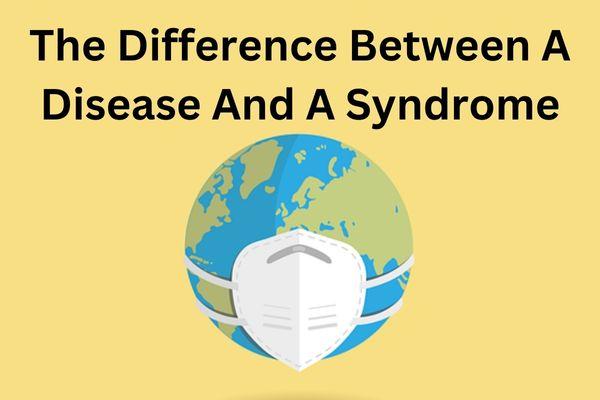 When it comes to medical conditions, two terms that are often used interchangeably are “disease” and “syndrome”. However, these are two distinct concepts that have different causes, symptoms, and treatment approaches. Understanding the difference between the two is crucial for effectively managing and treating medical conditions.
When it comes to medical conditions, two terms that are often used interchangeably are “disease” and “syndrome”. However, these are two distinct concepts that have different causes, symptoms, and treatment approaches. Understanding the difference between the two is crucial for effectively managing and treating medical conditions.
A disease is a specific medical condition that affects the body or mind. It has a clear and identifiable cause, whether it be a genetic mutation, infection, or environmental exposure. Diseases are characterized by specific symptoms, signs, and diagnostic criteria, making them relatively straightforward to diagnose and treat. Examples of diseases include diabetes, cancer, and tuberculosis. These conditions are often treated with specific medical interventions aimed at alleviating or curing the condition.
On the other hand, a syndrome is a collection of symptoms that occur together and point to a certain condition. These symptoms can be caused by a variety of factors, such as genetic mutations, infections, or environmental exposures, and may be associated with one or more underlying diseases. Syndromes are often characterized by a combination of signs and symptoms, making them difficult to diagnose. They are diagnosed based on a combination of physical exam and patient history. Examples of syndromes include fibromyalgia syndrome and chronic fatigue syndrome. The treatment for syndromes is often supportive and management-focused, aimed at alleviating symptoms and improving quality of life, as the underlying causes of a syndrome may not be easily identified or cured.
 It’s important to note that individuals suffering from a disease may also experience symptoms that are indicative of a syndrome. For example, a person with cancer may experience symptoms such as fatigue and pain, which are also indicative of a syndrome. In such cases, it is important to understand that the symptoms are not only caused by the disease, but also by the metabolic, physiological and psychological changes caused by the disease itself. And in many cases, treatment for the disease may improve the symptoms of the syndrome as well.
It’s important to note that individuals suffering from a disease may also experience symptoms that are indicative of a syndrome. For example, a person with cancer may experience symptoms such as fatigue and pain, which are also indicative of a syndrome. In such cases, it is important to understand that the symptoms are not only caused by the disease, but also by the metabolic, physiological and psychological changes caused by the disease itself. And in many cases, treatment for the disease may improve the symptoms of the syndrome as well.

The difference between a disease and a syndrome can be compared to the difference between a specific, defined ailment and a broader, underlying condition. A disease can be thought of as a specific ailment that affects the body or mind, while a syndrome can be thought of as a collection of symptoms that are indicative of a broader, underlying condition. Diseases are typically caused by a single, identifiable factor and they often have specific diagnostic criteria, symptoms, and signs. This makes them relatively straightforward to diagnose and treat with specific medical interventions.
On the other hand, syndromes are often characterized by a combination of symptoms that may be caused by a variety of underlying factors. These symptoms may be indicative of one or more underlying diseases, and the cause of a syndrome may not be easily identifiable. Syndromes can be difficult to diagnose, as they often rely on a combination of physical exam and patient history. The treatment for syndromes is often supportive and management-focused, aimed at alleviating symptoms and improving quality of life, rather than targeting a specific cause.
 It’s also important to remember that just because a condition is classified as a syndrome, it doesn’t mean it’s any less serious or impactful than a disease. Many syndromes, such as chronic fatigue syndrome and fibromyalgia, can have a significant impact on a person’s quality of life, and the symptoms can be debilitating. It’s important to take these conditions seriously and to provide support and management-focused treatment to alleviate symptoms and improve quality of life.
It’s also important to remember that just because a condition is classified as a syndrome, it doesn’t mean it’s any less serious or impactful than a disease. Many syndromes, such as chronic fatigue syndrome and fibromyalgia, can have a significant impact on a person’s quality of life, and the symptoms can be debilitating. It’s important to take these conditions seriously and to provide support and management-focused treatment to alleviate symptoms and improve quality of life.
In conclusion, a disease and a syndrome are distinct medical conditions that have different causes, symptoms, and treatment approaches. Both can have a significant impact on the individuals who suffer from them, but they are often treated differently, with diseases usually treated with specific medical interventions and syndromes managed with a support and management-focused approach.



